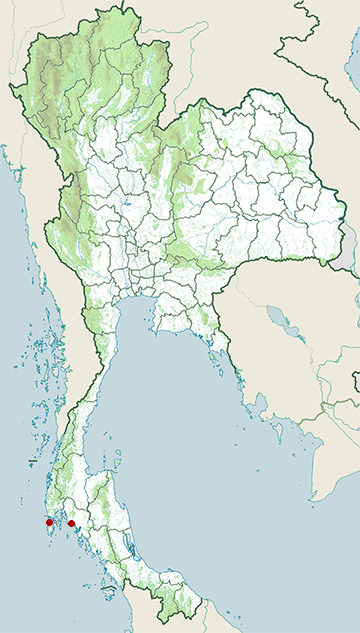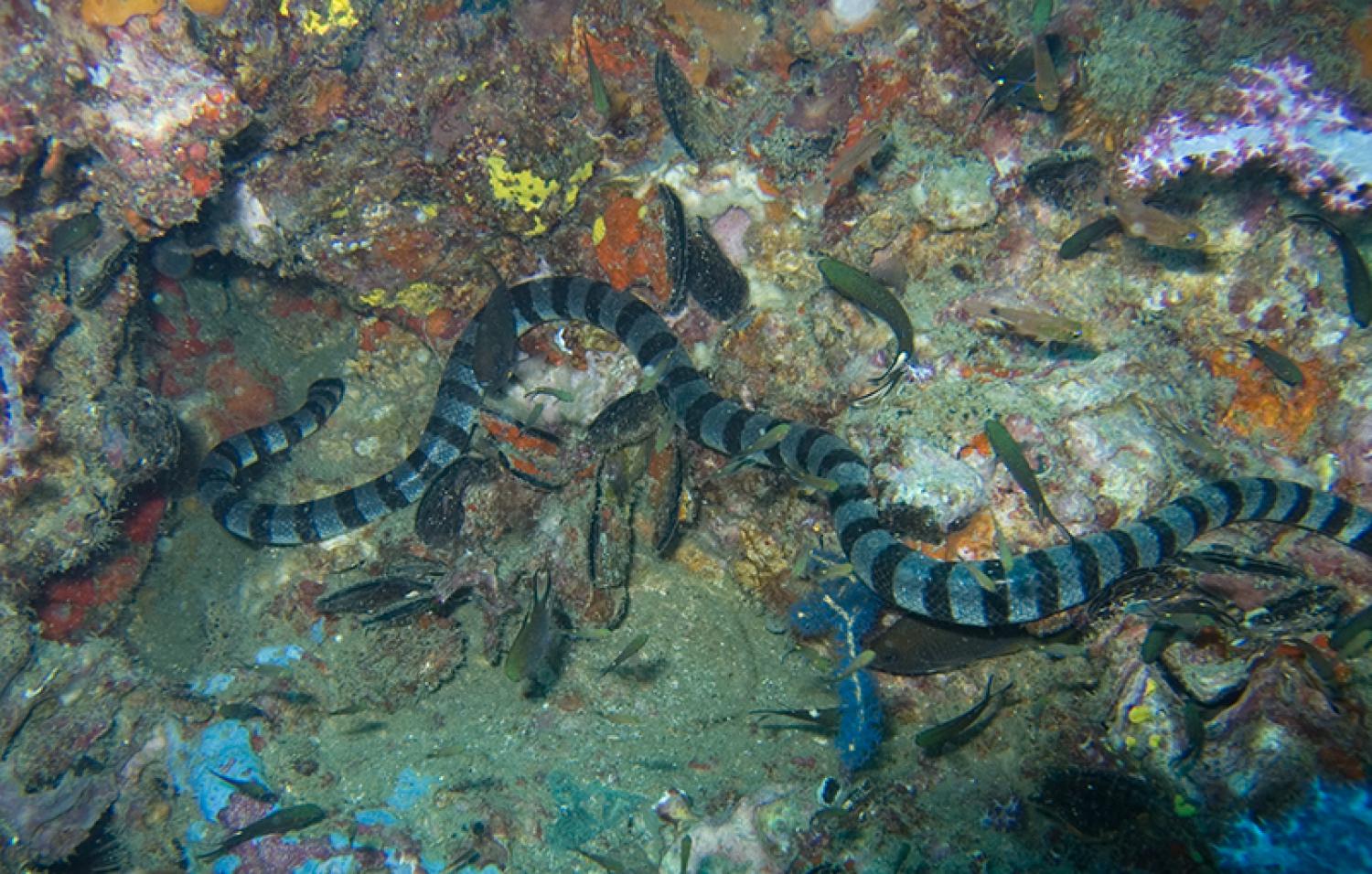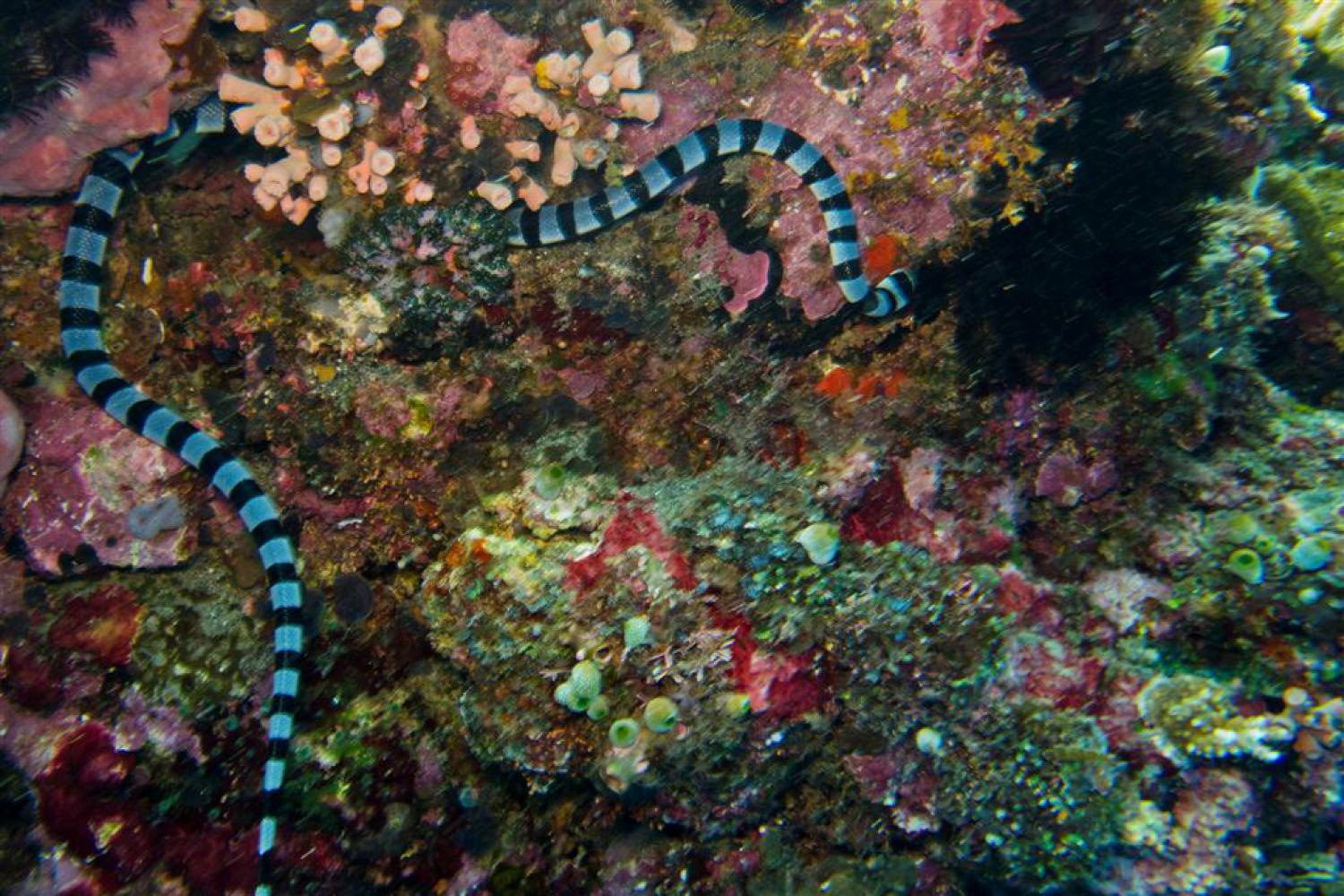Species of Thailand
Blue-lipped sea krait
Laticauda laticaudata
(Carolus Linnaeus, 1758)
In Thai: งูสมิงทะเลปากดำ, ngu saming thale paak damm
The blue-lipped sea krait (Laticauda laticaudata), also known as the blue-banded sea krait or common sea krait, is a species of venomous sea snake in the subfamily Laticaudinae of the family Elapidae. It is found in the Indian and Western Pacific Oceans.
Taxonomy
The blue-lipped sea krait was one of the many species originally described by Carl Linnaeus in his landmark 1758 10th edition of Systema Naturae, where it was given the binomial name Coluber laticaudatus. There are two subspecies, Laticauda laticaudata laticaudata and Laticauda laticaudata affinis.
Description
Ventral scales of this snake are large, one-third to more than one-half the width of the body; the nostrils are lateral; nasal scales are separated by internasals; 19 longitudinal rows of imbricate scales are found at midbody; no azygous prefrontal shield is present; rostral scales are undivided; ventrals number 225–243; subcaudals number 38–47 in males, females have 30–35 (ventral and subcaudal counts after Smith 1943:443). The upper lip is dark brown. Total length varies with sex: males are 910 mm, females are 1070 mm; tail lengths are similar: 110 mm. The 19 rows of scales and the dark brown upper lip can be used to differentiate the blue-lipped sea krait from other Laticauda species.
Distribution and habitat
This species is found in the Indian and Western Pacific Oceans: Bay of Bengal (Bangladesh, East India, Andaman & Nicobar Islands, Sri Lanka, Myanmar, Thailand), coasts of Malay Peninsula to Indonesia, Timor-Leste, New Guinea, the Philippines, off the coasts of Fujian and Taiwan, Japan, Polynesia, Melanesia, Solomon Islands, New Caledonia, Palau, Vanuatu, Fiji, and Australia (Queensland). One specimen was found in Devonport, New Zealand in 2011, however it died shortly after being taken to Kelly Tarlton's Sea Life Aquarium.
The blue-lipped sea snake is spread all over the west pacific, making it known as the common sea krait, however taxonomic studies might indicate they might be an endemic species. Sea kraits forage in reefs and return to land to digest their prey, mate, slough, and lay their eggs. Sea krait experience rapid temperature shifts when going from water to land. They'll often mitigate these effects by seeking shelter from direct sunlight.
Special features
This snake is known to warm up in wedge-tailed shearwater burrows.
This article uses material from Wikipedia released under the Creative Commons Attribution-Share-Alike Licence 3.0. Eventual photos shown in this page may or may not be from Wikipedia, please see the license details for photos in photo by-lines.
Scientific classification
- Kingdom
- Animalia
- Phylum
- Chordata
- Class
- Reptilia
- Order
- Squamata
- Suborder
- Serpentes
- Family
- Elapidae
- Genus
- Laticauda
- Species
- Laticauda laticaudata
Common names
- English:
- Black-banded sea krait
- Blue-lipped sea krait
- Common sea krait
- Thai: งูสมิงทะเลปากดำ, ngu saming thale paak damm
Subspecies
Laticauda laticaudata affinis, John Anderson, 1871
Laticauda laticaudata laticaudata, Carolus Linnaeus, 1758
Conservation status

Least Concern (IUCN3.1)
Photos
Please help us review our species pages if wrong photos are used or any other details in the page is wrong. We can be reached via our contact us page.
Range Map

- Krabi Coast
- Thalang District, Phuket

